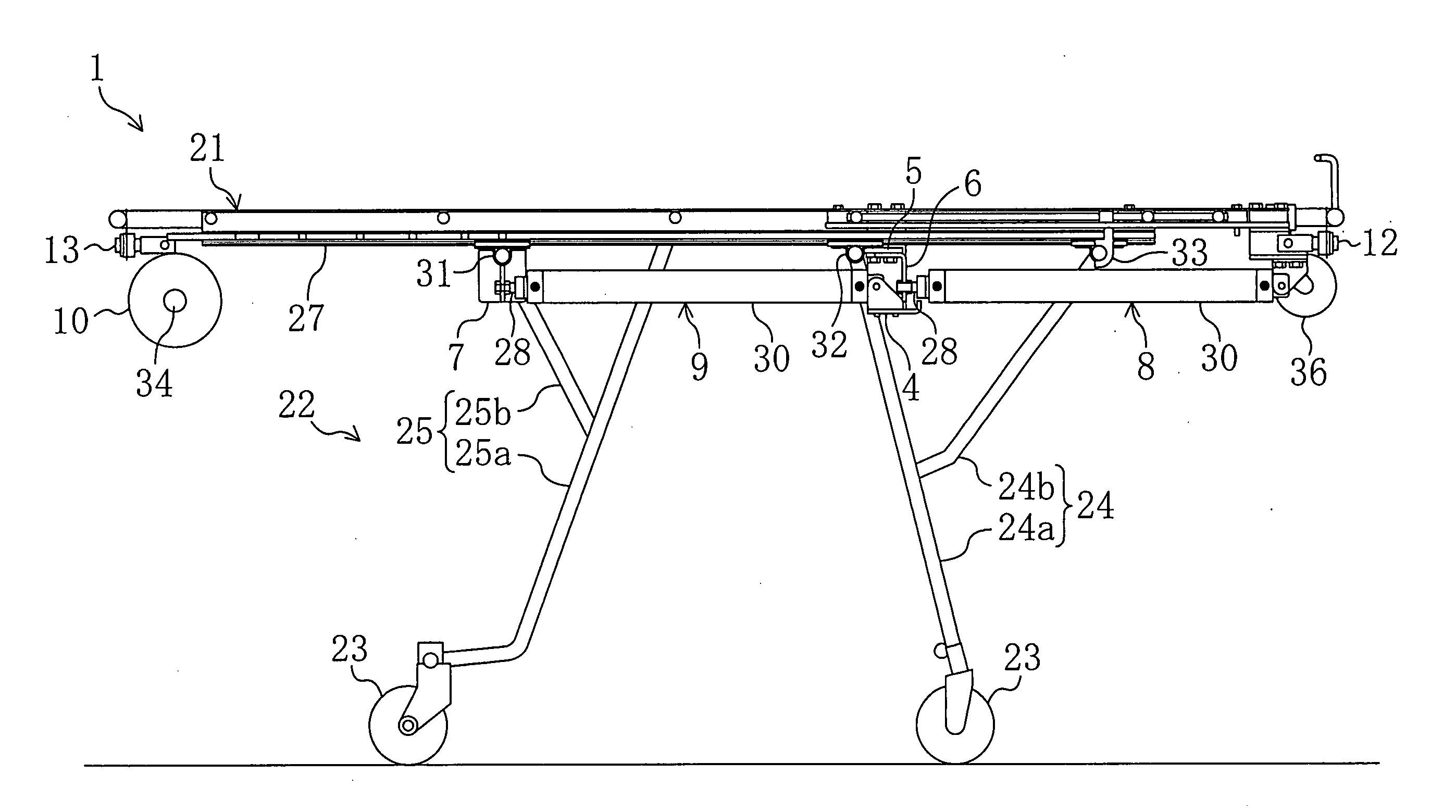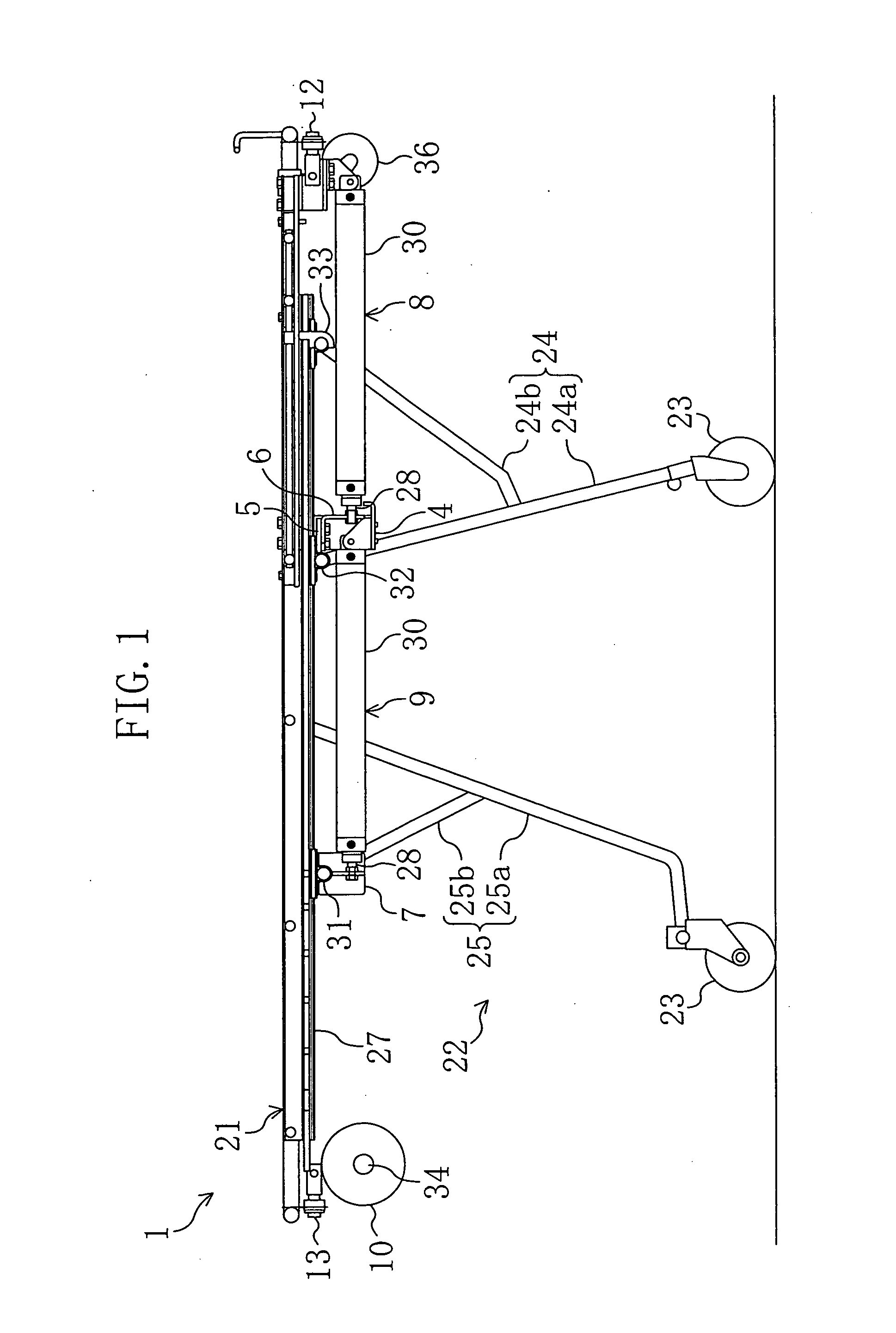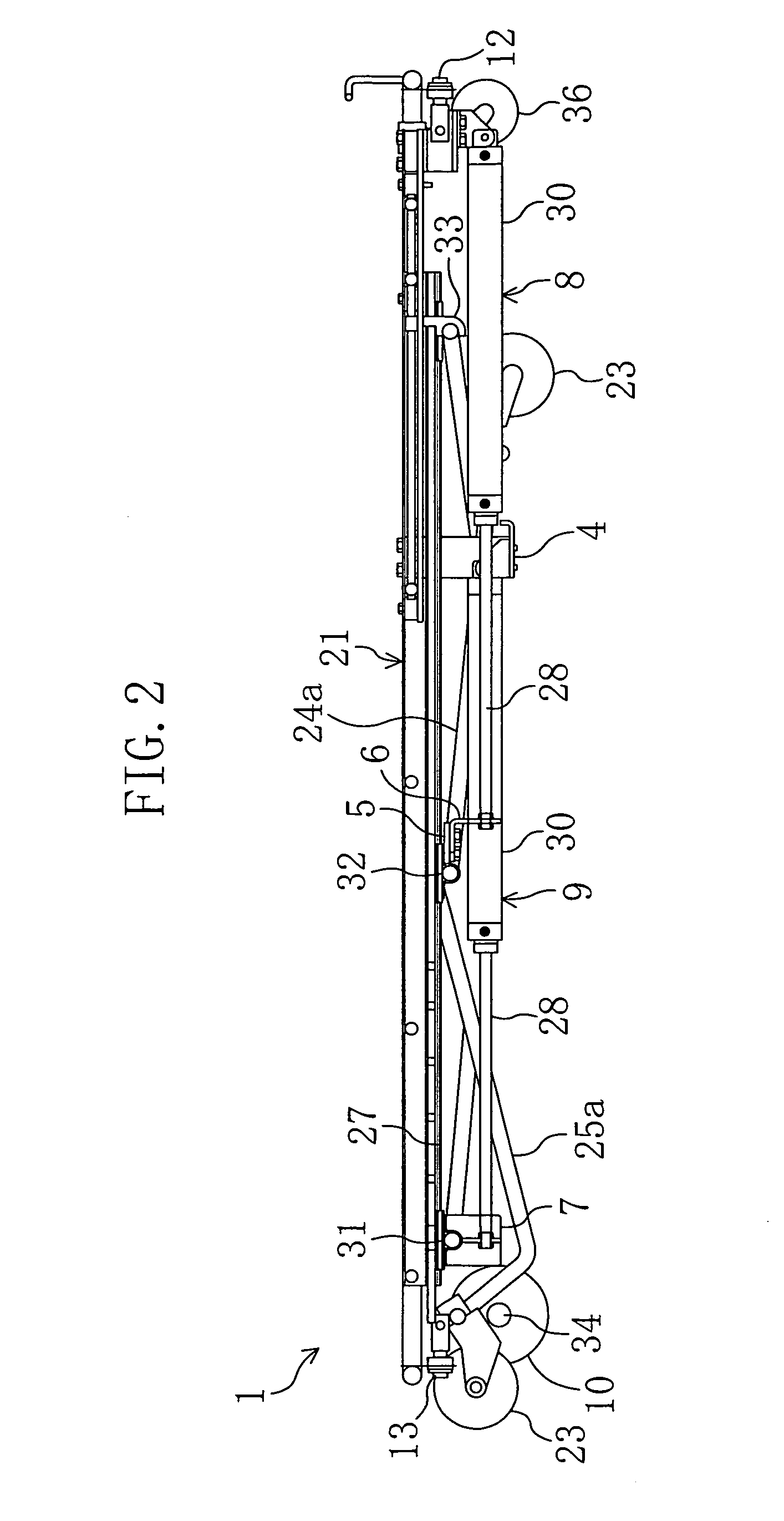Stretcher, stretcher system and method for using the system
a stretcher and stretcher technology, applied in the field of stretcher system and stretcher method, can solve the problems of large physical burden of each officer to do the work of lifting up the bed, the bed and the total weight of a sick or injured person is substantially large, and the physical burden of each officer is considerably large. the effect of reducing the force to push the stretcher to the top of the support platform, reducing the physical burden of ambulance officers, and reducing the raised position of the bed
- Summary
- Abstract
- Description
- Claims
- Application Information
AI Technical Summary
Benefits of technology
Problems solved by technology
Method used
Image
Examples
embodiment 1
[0099] As shown in FIG. 1, a stretcher 1 of Embodiment 1 comprises a bed 21 on which a sick or injured person will be laid, and legs 22 foldably provided on the bed 21. Hereinafter, the side of the stretcher at which the head of a sick or injured person laid thereon comes (right side in FIGS. 1 to 3) is referred to as the head side while the other side at which the feet of the sick or injured person comes (left side in FIGS. 1 to 3) is referred to as the feet side.
[0100] The bed 21 is made up of a so-called framed structure and is formed by assembling a plurality of pipe members. The bed 21 supports, at some points on the structure of the pipe members, a litter (not shown) for riding a sick or injured person thereon. In this embodiment, the bed 21 is formed separately from the litter. It is a matter of course that the bed 21 may be equipped with a litter. In other words, the bed 21 may be formed integrally with the litter.
[0101] The legs 22 consist of two front legs 24 and two rea...
embodiment 2
[0138] Embodiment 2 is a modified form of the stretcher 1 of Embodiment 1, in which the pneumatic cylinders 8 and 9 are turned ON / OFF in conjunction with the unlocking levers. Further, this embodiment further includes a deactivation device for forcedly deactivating the ascent assist device.
[0139] As shown in FIG. 7, the stretcher 1 of Embodiment 2 has substantially the same structure as the stretcher 1 of Embodiment 1. Like Embodiment 1, a head-side unlocking lever 35a is provided at the head side of the bed 21 and a feet-side unlocking lever 35b is provided at the feet side of the bed 21. In Embodiment 2, a main switch 70 and a deactivation switch 71 both for the ascent assist device are also provided at the feet side of the bed 21. The main switch 70 and the deactivation switch 71 are both formed of dial (rotary) switches. The type of the switches 70 and 71, however, is not particularly limited.
[0140] As shown in FIG. 8, the piping system 50 for the stretcher 1 of Embodiment 2 i...
embodiment 3
[0155] As shown in FIGS. 11 and 12, a stretcher 1 of Embodiment 3 includes a bed 21 on which a sick or injured person will be laid, and legs 22 foldably mounted to the bed 21. Hereinafter, only different elements from Embodiment 1 will be described. The same elements as in Embodiment 1 are indicated by the same reference numerals and description is not given to them.
[0156] In these figures, the reference numeral 80 denotes a caster cover 80 attached to the distal end of each of the main legs 24a and 25a of the front and rear legs 24 and 25 to hold the caster 23 rollably. The caster cover 80 is formed with a projection 81 extending sideways (in the front to back direction of the paper in FIGS. 1 and 2).
[0157] The stretcher 1 of Embodiment 3 does not have the pneumatic cylinders 8 and 9 as described earlier. This stretcher 1 has a pneumatic cylinder 83 mounted at the head side of the bed 21 and a pneumatic cylinder 84 mounted at the feet side of the bed 21. Each pneumatic cylinder 8...
PUM
 Login to View More
Login to View More Abstract
Description
Claims
Application Information
 Login to View More
Login to View More - R&D
- Intellectual Property
- Life Sciences
- Materials
- Tech Scout
- Unparalleled Data Quality
- Higher Quality Content
- 60% Fewer Hallucinations
Browse by: Latest US Patents, China's latest patents, Technical Efficacy Thesaurus, Application Domain, Technology Topic, Popular Technical Reports.
© 2025 PatSnap. All rights reserved.Legal|Privacy policy|Modern Slavery Act Transparency Statement|Sitemap|About US| Contact US: help@patsnap.com



